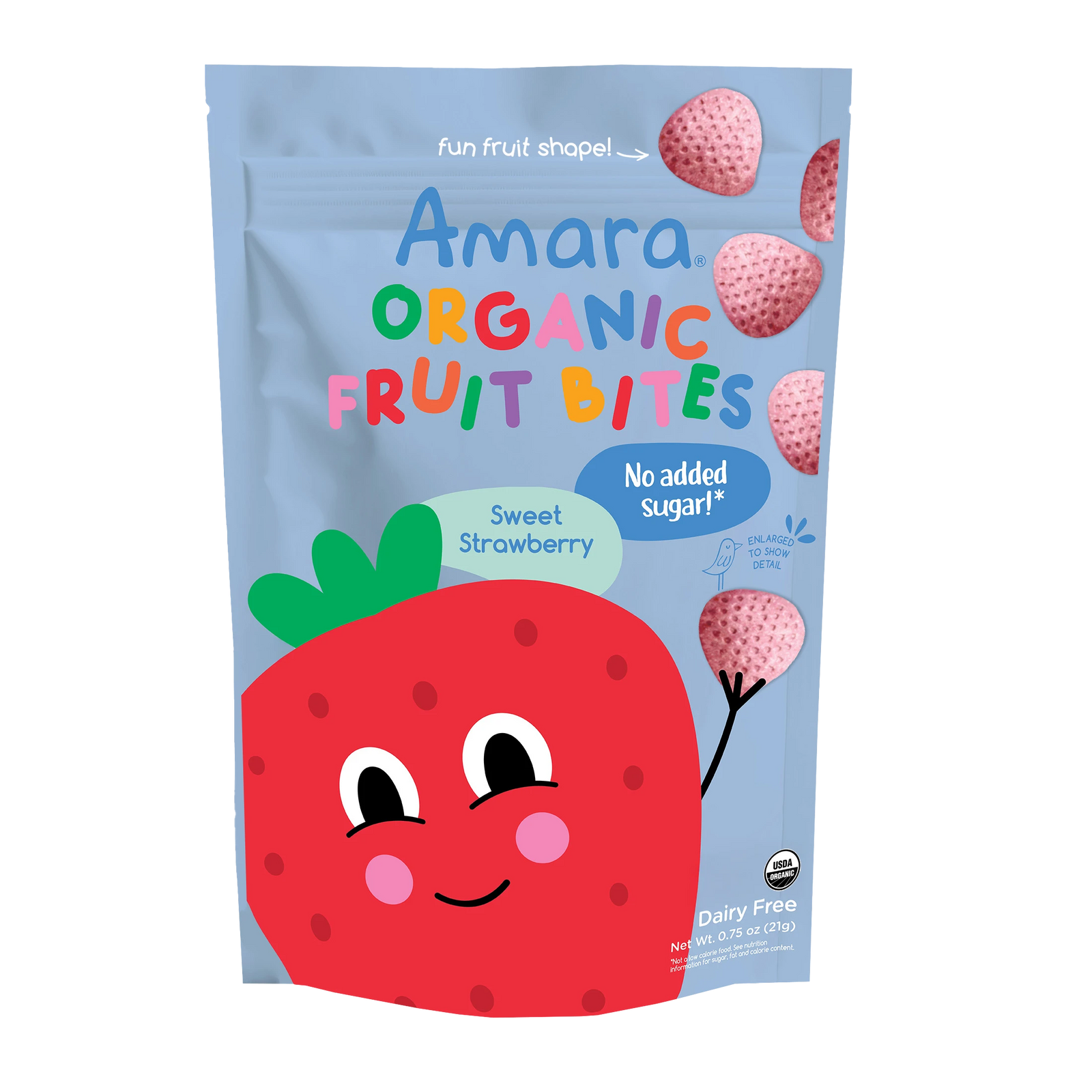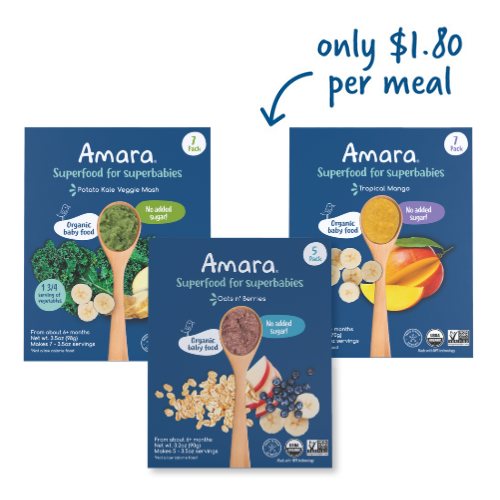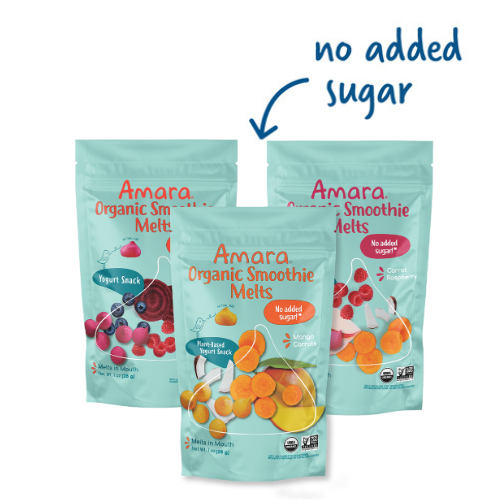
Key Questions this Article Answers:
- What’s the deal with heavy metals?
- What can we do about heavy metals?
- How to minimize your child’s exposure
- Looking ahead
What’s the deal with heavy metals?
Heavy metals (namely, cadmium, lead, mercury, and arsenic) are actually naturally-occurring substances. They’re commonplace in soil and water, and crops as a rule absorb some of these metals as they grow.
That said, some places have higher levels than others. In particular, areas that have been subject to pollution -- whether it be from pesticides, contaminated fertilizer, airborne contaminants, and/or industrial operations -- tend to have higher levels of heavy metal residues compared to other less “adulterated” regions. Some foods are more prone to absorption than others, too. Things like leafy greens and root vegetables (carrots, sweet potatoes, beets, etc.) hang onto heavy metals more than other types of fruits and veggies.
Thus, heavy metals are present in the foods we eat (and the water we drink). There is no shopping out of it. It’s true: we can’t buy our way out of toxic/heavy metals exposures -- for ourselves or for our children. We just can’t. Even if you DIY or buy organic when it comes to baby food (or any other food, for that matter), there’s no escaping it. (As economist Emily Oster explains: “The problem is largely with ingredients, not processing.”) We all are exposed to these substances on some level.
What wecan do? Minimize exposures.
We probably don’t need to convince you that it’s worthwhile to try to minimize your child’s heavy metal exposures -- it’s because babies and children are at a higher risk of negative neurological effects. *But it’s important to keep things in perspective. Firstly, remember: we are all exposed. Next, the concern with dietary exposures among children is longitudinal: heavy metal “buildup” in the body, rather than a single-time exposure/overdose. (I.e., you don’t need to lose sleep over that jar of rice-and-carrots your little one ate three days ago.) Lastly, many children in the US are at greater risk of harmful exposures from their drinking water, old plastic toys, and chipped paint (all of which may contain lead) than from their diets.
How To Lessen Your Child’s Exposure:
Recent findings on heavy metals in baby food -- and the 2021 Congressional report investigating them -- appear terrifying: a vast majority (90+%) of traditional baby foods on the market contain heavy metals. But, as the Healthy Babies Bright Futures report “What’s in my baby’s food?” notes: “on the spectrum from worry to action, parents can choose to act.”
It’s possible to minimize your child’s exposure -- by eighty percent! -- with some simple dietary swaps. *The biggest culprits by far are rice-based foods, which are nearly universally high in arsenic; avoiding things like rice puffs, rice cereals, rice teethers, etc. can take you pretty far on its own. Instead of rice cereals, look for other options like oat, barley, millet, wheat, spelt, amaranth, or quinoa -- just make sure whatever you choose is appropriately prepared/processed for your child’s age. (BTW, Amara’s smoothie melts are a perfect alternative to rice puffs! They’re delicious, melt-in-your-mouth, rice-free, and Clean Label Certified.) Cutting down on (or eliminating!) fruit juices, which often contain traces of lead and arsenic, is another great tactic. And offering a wide variety of fresh whole vegetables and fruits also helps reduce exposure.
Organic foods are not immune to metals from farming, but they could contain lower levels of these metals due to organic farming practices (namely, not using pesticides). Similarly, it’s possible that foods grown on more rural farms farther from cities, highways, or mining regions have fewer heavy metal residues.
Here are the top five changes Healthy Baby Bright Futures recommends parents make to limit their baby’s exposures to dietary heavy metals:

In short, these THREE basic changes can all help decrease dietary heavy metal exposures:
- curb how much rice your child eats (wherever it comes from);
- limit or do away with juice;
- focus on variety in your child’s diet.
Just remember: avoiding certain foods should not come at the cost of offering your child a balanced, nutritious diet of diverse foods!
The good news?
Things are changing. The FDA’s Closer to Zero plan is aimed at limiting toxic dietary exposures among babies and children -- it’s a four-step initiative designed to determine maximum levels for various foods and implement a data monitoring system to supervise them. It’s underway already, but will likely take a few more years before it’s in full swing.
Oh, and guess what? None of Amara’s baby foods or toddler snacks contain rice, so if you’re looking for an easy swap, we can help! Amara’s complementary baby foods are made from real organic ingredients (and NO added sugar, additives, and all the rest), delivering all the convenience of store-bought baby foods without any of the trade-offs. It’s like homemade baby food, but easier. 👏 And Amara’s smoothie melts are the perfect snack for littles, whether you’re on-the-go or hanging at home: they’re no mess, no fuss, and no additives. Try this at home: taste test! Compare Amara smoothie melts to any kind of rice puffs… which one would you rather eat?
 Amara's Chief Nutritionist: Sonia A. Schiess, PhD in Nutrition, specialized in the introduction of solids and liquids to infants. Sonia's passion started when she was studying nutrition and dietetics in university, completing a post degree in Human Nutrition. Later on, she completed her PhD as a nutritionist, with a focus on introducing food in the first year of a baby's life. Her wide experience gives her a unique perspective, drawing from her time in clinics, hospitals, independent consulting and university research. She's authored several papers including "Introduction of complementary feeding"; "Introduction of potentially allergenic foods in the infant's diet during the first year of life" and "Intake of energy providing liquids during the first year of life" in five European countries. The combination of Sonia's science and our chef's magic ensures every Amara product is not only optimized for your baby's health but is delicious as well.
Amara's Chief Nutritionist: Sonia A. Schiess, PhD in Nutrition, specialized in the introduction of solids and liquids to infants. Sonia's passion started when she was studying nutrition and dietetics in university, completing a post degree in Human Nutrition. Later on, she completed her PhD as a nutritionist, with a focus on introducing food in the first year of a baby's life. Her wide experience gives her a unique perspective, drawing from her time in clinics, hospitals, independent consulting and university research. She's authored several papers including "Introduction of complementary feeding"; "Introduction of potentially allergenic foods in the infant's diet during the first year of life" and "Intake of energy providing liquids during the first year of life" in five European countries. The combination of Sonia's science and our chef's magic ensures every Amara product is not only optimized for your baby's health but is delicious as well.







Leave A Comment